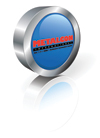
If attendees of METALCON International didn’t
get enough instruction at the demos and on the show floor, they had plenty of
educational sessions to choose from at the event.
METALCON International 2008 was held Oct. 1-3 at the Baltimore Convention Center, drawing nearly 7,000 high-level metal construction professionals from more than 50 different countries.The event is the only annual conference and exhibition that features the latest products, educational programs and demonstrations of field techniques for the use of metal in construction.
Before swarming the show floor to view the latest in cutting-edge technology, products and services, attendees gathered for seminars on everything from technical matters to business management to workplace safety. With 48 sessions on seven different educational tracks, the event had something for just about everyone.
Roofing Contractor was on hand for seminars on metal details, retrofit roofing, and sales and marketing. Here’s a look at what transpired:

Devilish Details
“When it comes to metal roofs, details are where your money is made or lost,” said Vaughn Bacon, manager of Technical Services for MBCI NCI Building Systems, as he kicked off his METALCON seminar titled “Metal Roofing: The Devil Is in the Details.”Bacon showed some photos from jobsites of details gone horribly wrong to prove his point, followed by photos documenting the proper way to do the job. “The harder you make something, the less chance it will be done right,” he said.
He urged contractors to think long-term when it comes to metal roofing. Bacon said metal roofs should last 20 years or more, so make sure all elements of the system will perform well over its life span.

Proper planning is essential. “Think about your details early,” Bacon said. “Details should be planned in advance and down in writing on the drawing board before you go out into the field.”
Bacon explored common leak points with metal roofs, including penetrations, side laps and end laps. “You can ruin a great day’s work if the guy running the seamer doesn’t know what he’s doing,” he said.
“Roofs have problems at details,” said Bacon. “Probably the number one cause of leaks is penetrations, and the most common problems involve roof curbs.”
Bacon recommends using curbs made from aluminum or stainless steel - something weldable. “Monolithic curbs are best,” he said. “Run them from rib to rib, under the top sheet and over the bottom, shingle fashion. A curb is nothing but a water diverter. That’s all it is. Take your time and put it in right and it will last forever.”
He offered some tips for dealing with penetrations, including:
- Do not penetrate a panel seam.
- Do not use residential pipe jacks or those made for membrane roofs.
- Do not block the flow of water.
- Never use a starter “J” in a valley, as it can hold water and debris.
- When lightning protection equipment is considered, make sure copper or copper runoff does not come into contact with galvalume.
- Do not cut galvalume with a saw. “Do not cut these sheets with anything except nibblers, snips, shears - something with a shearing action.”
- Do not cut anything on the roof, as metal shavings can damage the roof surface. Make all cuts on the ground.
- Do not write on metal panels with a carpenter’s pencil, as the lead or graphite can corrode the metal. Use a wax pencil or a Sharpie on the backside.

Vaughn Bacon used photos from actual jobsites to
demonstrate the right and the wrong way to fabricate details. (Photos by Chris
King.)
Do the Right Thing
Chuck Howard, P.E., president of Metal Roof Consultants, was in the metal roof contracting business for almost 30 years, and he now serves as a consultant to contractors, architects, engineers, and building owners. He added pitch and installed a metal retrofit roof over a flat roof in Wilmington, Ohio, in 1979, and that roof is still functioning perfectly today - and may well be the oldest one of its type in the country. He used that project and a 2008 application in Ocean City, Md. as examples of the proper way to install a metal retrofit roof in his seminar titled “Do It Right the First Time.”Callbacks and lawsuits are just two potential problems that can be prevented by proper planning and workmanship, noted Howard. “If you want to avoid lawsuits, do it right the first time and there’s no lawsuit,” he said. “There’s a reason that roof had zero punch list items, and that reason is the process.”
As for the 2008 case study, the job came about as the result of a seminar Howard gave at METALCON 2003, in which he detailed the 1979 project. One of the attendees, John Martindale, president of Brothers Services Co. in Baltimore, approached Howard after the seminar and they talked about the market potential for metal retrofit roofing. “There are great, great opportunities out there, and they’re easy to sell,” Howard said.
He detailed the steps in the process of obtaining and installing a retrofit job, beginning with the bid. “As soon as the numbers hit the table, the fight starts,” said Howard, who urged contractors to take their time, measure the job, get a copy of the structural plans, and create approvable shop drawings in advance. “You can’t think, ‘We’re going to solve this in the field,’” he said. “It all starts with the shop drawings.”
A jobsite visit is an essential part of the estimating process, asserted Howard. “If you do a retrofit job, you have to kick the gravel,” he said. Take-offs should include a quantified items list. “Write everything down,” he advised. “If you use an automated estimating system, remember it won’t think for you.”
Understanding the terms and conditions of the contract is crucial, said Howard. “If you don’t have a good contract, you won’t have a successful project,” he said, noting to make sure wind pressure design is calculated in accordance with ASCE 7 and panels and assemblies are tested per ASTM E 1592. “If there are problems, the contractor is seen as liable. The contractor is where the buck stops.”
The majority of lawsuits in the metal roofing industry are due to faulty installations, said Howard, so it is the contractor’s duty to make sure everyone is on the same page at the jobsite. Ensure that the materials will satisfy the design and get approval prior to substituting anything that’s specified. “If you don’t do it right the first time, you’ll spend more time and more money fixing it later,” he said. “The contractor’s responsibility? Inspect, inspect, inspect. Of course, that’s also the duty of the building owner and the manufacturer.”
Since the business owner can’t get be at the site all of the time, it is the project manager who is the key to the inspection process. Offer workers incentives for early completion and explain the bonus structure beforehand so they know how they earned it.
“You must explain estimate expectations to your field forces,” Howard said. “The foreman is the guy that’s there on the job. They are the ones who make or break a project.”

Chuck Howard, P.E., drew on case studies to
detail the proper way to install a metal retrofit roof.
Generating Leads, Making Sales
Frank Farmer, president of American Metal Roofs, walked attendees through his step-by-step process for obtaining leads and converting them into sales in his presentation, “Building a Profitable Metal Roof Company While Others Struggle.” Farmer attended medical school, sold windows and built a franchise tax business before forming American Metal Roofs in Flint, Mich., in 2000. With $6.5 million in revenue despite Michigan’s struggling economy, American Metal Roofs has been recognized by Inc. magazine as one of the fastest-growing companies in the United States.Marketing efforts should be carefully tracked, Farmer said. Business owners should know the cost per raw lead by source, the percentage of raw leads converted to appointments, the percentage of appointments resulting in a demo, and the percentage of sales installed. “Figure your numbers and work to improve,” said Farmer, who urged contractors to look for breakdowns in the process and correct them promptly. “It does not make sense to spend more money advertising if you have a weak link,” he said.
When it comes to metal roofs, many homeowners do research for a long time before they make a decision to buy, noted Farmer, so it pays to market to people who visit the company’s Web site. “Twenty percent of our business is from old leads,” he said, adding that 10 percent of revenue goes back into advertising.
He also had a word of warning for contractors who are unsure of their pricing. “Effective marketing will only accelerate the inevitable,” said Farmer. “You need to be profitable, and you can only be profitable if you have the proper margin.”
According to Farmer, the Internet has changed the sales process. “Customers now do their own research and at the end they are just picking a vendor,” he said.
He urged contractors to use hot buttons to grab the audience’s attention. “Hot buttons are things that bring pleasure or irritation,” said Farmer. With roofing, hot buttons could be a shorter than expected life span from their existing roof system, excess heat or poor installation, stated Farmer. “If negative hot buttons get their attention, tell them how you’ll solve the problem and give a strong call to action based on greed. What’s the number one thing people hate about roofs in your area? That’s the hot button, and you can craft your ad to get a response.”
When a raw lead comes in, the goal is to make a good first impression on the telephone, gather information, instill confidence, and let customers know you can help by sending a consultant to look at their home and make a recommendation.
“When do people buy?” Farmer asked. “When they like you, when they trust you, and when the value exceeds cost. Once these three criteria are met, you get a sale.”
Farmer advised contractors to operate from a preprinted pricing sheet. “Discounts must be real and believable,” he said. “They should also be preprinted and funnel down - that is, they should get smaller as you go.”
At the meeting, assume the sale will take place, and don’t be afraid to ask for the down payment and fill out the contract. “You will sell more orders if you write the contract on each order,” Farmer said.

Frank Farmer, president of American Metal Roofs,
explored ways to generate leads through effective marketing in his seminar.


Report Abusive Comment